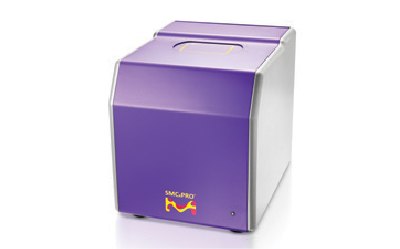Optimize Sample Performance with the SMC® Plate Washer Evaluation Kit
With SMC® technology, immunoassays reach sensitivities in the femtogram/mL level, meaning they require both the highest performance and the highest consistency through each step of your assay workflow. Before running your precious samples, learn how to evaluate the performance of your plate washer using the SMC® Plate Washer Evaluation Kit.
What is the SMC® Plate Washer Evaluation Kit?
The SMC® Plate Washer Evaluation Kit provides all the reagents required to run 5 plates, meaning that you can test multiple washers or test before and after plate washer maintenance. It also includes a unique reagent that mimics steps in the SMC® immunoassay, with an abbreviated workflow that both isolates and highlights the performance of the plate washer. This reagent was optimized to analyze the BioTek® 405™TSUVS Plate Washer for SMC® and MILLIPLEX® Assays and to analyze data on the SMCxPRO® immunoassay platform. With this kit, you can confirm optimal plate washer performance before evaluating your precious samples.
Plate Washer Evaluation Kit Workflow
As mentioned, this plate washer evaluation kit has an abbreviated workflow to execute assays in approximately 1 hour. The steps in the workflow help to minimize sources of error in assay execution and determine intra-plate precision.
This workflow is shown below and has 8 steps.
The steps in THE SMC® PLATE WASHER EVALUATION KIT workflow include:


Plate washer protocols
a. Post capture wash (~8 minutes)
b. 4 cycle pre-transfer (~10 minutes)
c. Final aspirate (~2 minutes)
d. Remove the plate from the washer

Add 10 µL of elution buffer/well
Then, incubate, shaking for 10 minutes

Place the plate on the magnet for 2 minutes

Transfer of 10 µL eluate to SMC® 384-well reading plate
The plate should contain 10 µL of Buffer D

Place the plate in the SMCxPRO® instrument to analyze

Fluors are excited

Obtain data
Learn more about tips for the SMCxPRO® platform in our SMCxPRO® Best Practices article.
Data from a Plate Washer Before and After Preventive Maintenance
The first data set is from a plate washer in need of preventative maintenance (Table 1). The highlighted wells, with lower Response Event values, indicate microparticle loss that will lead to poor assay precision. Nearly all columns and rows have greater than 20% CV.
Table 1. Plate washer before preventative maintenance.
Wells in orange indicate wells with visible loss of microparticles. CVs in pink are >20% CV.
The second data set is the same plate washer assessed after performing recommended maintenance procedures (Table 2).
The overall plate, column, and row precision have decreased to below 20% CV.
Learn more about SMC® technology in our Overview of Ultrasensitive Immunoassay Technology article or find more expert advice in our SMC® Tips & Tricks article.
Related Products
For Research Use Only. Not For Use In Diagnostic Procedures.
To continue reading please sign in or create an account.
Don't Have An Account?